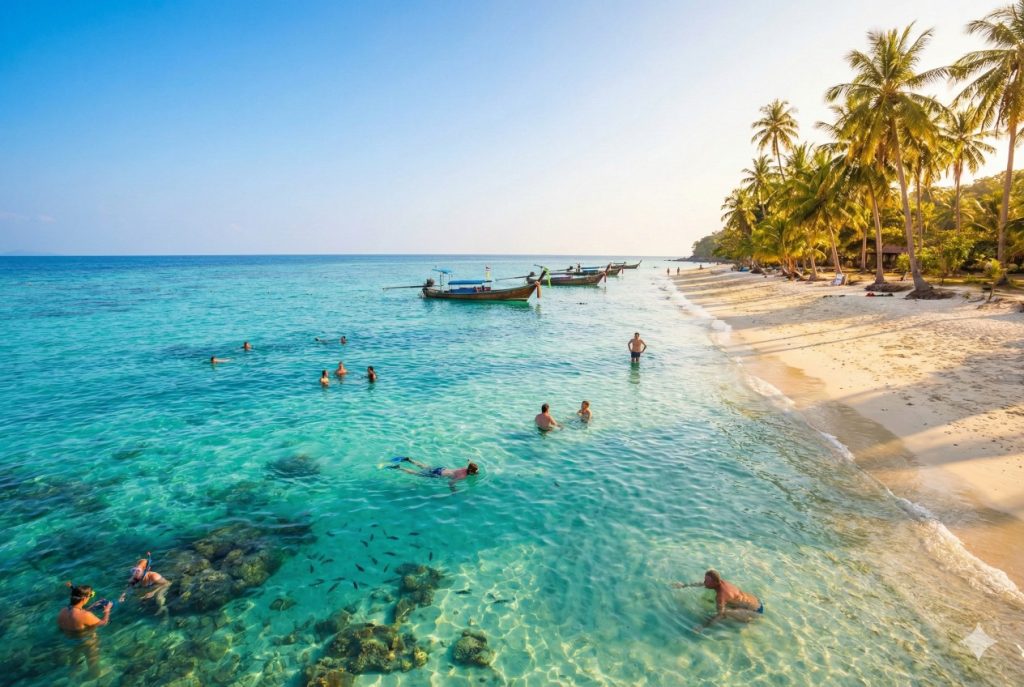The Blue City of Jodhpur is a stunning fort town in Royal Rajasthan that sits on the verge of a huge emptiness known as the Thar. This Rajasthani city is known for its indigo-dyed buildings, the ocher countryside of the Bishnoi population, skilled artisans, the magnificent Mehrangarh Fort, and legends such as Om Banna, the Khejarli Massacre, and the infamous Salman Khan tragedy. The walled city of Jodhpur, with its history and legacy, preserves the medieval era’s wonderful and colorful beauty. Its magnificent palaces, lovely Havelis, secret stepwells, ancient bazaar, heritage structures, delectable cuisines, and talented artisans tell the narrative of history worthy of a master opus.

OUR ROAD TRIP TO JODHPUR ON OUR OWN
Jodhpur has been on our wish list for a long time after a road trip to Jaiselmer and Bikaner. Finally, our trip to Jodhpur through Jaipur was one of our most memorable travel experiences. What makes it even more meaningful is that it was my little one Shivansh’s first road trip, when he was just 2 months old. This self-drive road trip to the legendary blue city of Jodhpur was a celebration of my professional accomplishment, as I was granted the highest honor in my organization, the Chairman’s Award, for outstanding performance, and as part of the award policy, I was required to take a 5-day family holiday. A traveling soul could not ask for more, so even though our baby was only two months old at the time, we began planning the journey and set off on the road to Jodhpur via Jaipur in September 2016.

DELHI TO JODHPUR ROAD TRIP VIA JAIPUR
Delhi – Jaipur – Ajmer – Pushkar – Jodhpur is the route. We completed everything in two days, including a stop in Jaipur on the first day. Instead of driving straight to Jodhpur from Jaipur on day two, we made a detour through Ajmer and Pushkar. The road from Pushkar to Jodhpur is of average quality, with some particularly terrible parts. We traveled the Jodhpur – Jaipur – Delhi route back to Delhi. This trip across the N25, NH58, and NH48 was excellent, with excellent road infrastructure throughout.

A SHORT HISTORY OF JODHPUR
Rao Jodha of the Rathore Clan established Jodhpur as the capital gem of Marwar in 1459, when he relocated the capital from Mandore to Jodhpur. Jodhpur became a prosperous kingdom thanks to the valor of the Rathor clan and the foresight of the Marwari traders, and opponents from all sides desired to seize and conquer it. The Rathore clan erected the formidable fort of Mehrangarh to dissuade other monarchs, including the Mughals, and finally, Akbar, the Great Mughal King, was compelled to ally with the Rathores by marrying one of the princesses. This agreement provided a stable future for the kingdom, allowing it to develop for many years to come.

A QUICK VIEW OF JODHPUR’S LESSER-KNOWN AND INTERESTING FACTS
● It has been dubbed Blue City, Sun City, and The Gateway to the Thar throughout the previous five centuries. ● Jodhpur became an important commercial site due to its strategic location on the overland road between Delhi, which has traditionally been the heart of Indian politics, and Gujarat ports supplying Arabs and European traders. The Marwaris, or local businessmen, prospered through trading goods like opium, copper, silk, sandalwood, spices, dates, and coffee. ● Jodhpur is noted for its Malani or Marwari horses, which are a unique and unusual breed. Race Course and Polo are so popular. ● Jodhpur is famous for inventing unique riding breeches called Jodhpurs all over the world. ● The Royal Residence of Umaid Bhawan Palace, one of the world’s newest forts, is the world’s biggest privately-owned residence and also contains the world’s most opulent luxury hotel, Umaid Bhavan Palace by Taj. ● Mawa ki kachori, Pyaj ki Kachori, Mirchi vada, Dal bati churma, Makhaniya lassi, and many other mouthwatering foods have their origins in Jodhpur. ● Every year, the Marwar festival and the Nagaur festival are held to celebrate Rajputana’s inherent essence and colorful customs.
WHY ARE JODHPUR’S HOUSES PAINTED IN BLUE?
The first question that comes to mind when you view the old city of Jodhpur is about the color blue, after all, it is a city with more than 50 colors of blue. Why are there so many blue homes in one region of the ancient city? It has been a long-standing custom in this city, giving it a distinct personality. The color blue, in a way, narrates the tale and adds another legend-worthy depth to this magnificent metropolis. I talked to a lot of people in the area about it, and virtually everyone offered me three plausible and reasonable explanations.
IN JODHPUR, THERE ARE THREE EXPLANATIONS FOR THE BLUE COLOR OF THE HOUSES:
● When the city was founded, the Kshatriyas, who are protectors and warriors, took over the right side of the fort, while the Brahmin, who are the keepers of knowledge and rituals, took over the left side. Brahmins in Jodhpur worshiped Lord Shiva and painted their homes blue since the color blue is linked with him.
● Lime and copper sulfate were both abundant in Rajasthan, and their combination produces a vivid blue hue that is also an insect repellant. Later, to keep the custom alive, a lime and indigo combination was used.
● Because blue reflects the most heat, it is utilized in Jodhpur, which is renowned as India’s Solar City because it receives the maximum sun power per unit area. Blue was used to keep the interiors cool.







